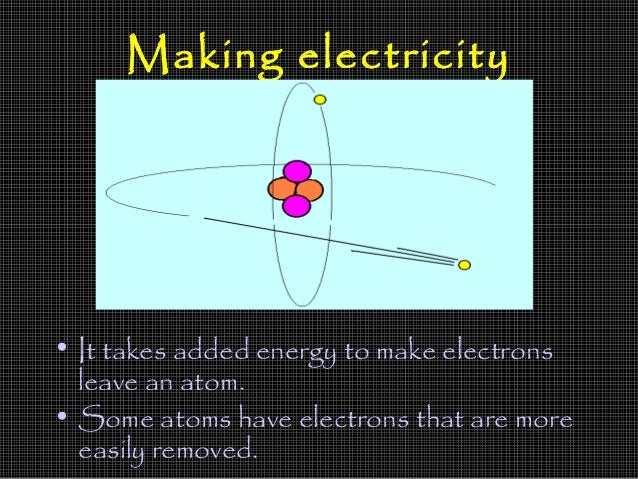The concept of “atomic electricity” invariably evokes a blend of intrigue and skepticism among physicists and enthusiasts alike. It prompts examinations of the fundamental principles governing electromagnetic interactions at the atomic scale. The term often conjures images of subatomic particles dancing in synchronized motion, their electric charges engendering a cacophony of forces that conduit the underlying essence of matter. However, the question remains: is atomic electricity, in its conceptual essence, a tenable proposition, or does it merely serve as an alluring metaphor for more complex phenomena?
To unpack the notion of atomic electricity, one must first delve into the atomic structure itself. At its core, the atom consists of protons, neutrons, and electrons. Protons and neutrons reside within the nucleus, while electrons occupy probabilistic orbitals surrounding this central core. It is crucial to recognize that each of these particles possesses distinct electric charges: protons are positively charged, electrons negatively charged, and neutrons are neutral. This charge interplay is fundamental in understanding electricity, leading to the conception of “ionic” and “covalent” interactions at a microcosmic level.
Electricity, as a phenomenon, is a manifestation of the movement of charged particles. In conductive materials, such as metals, electrons are often loosely bound to atoms, allowing them to flow freely. This flow constitutes electric current, a central tenet of electrical engineering. The origin of this current can be traced back to atomic interactions, wherein electrons vacate their atomic orbitals to join a collective movement through the material. Hence, the linkage between atomic behavior and electricity is irrefutable, yet it begs a deeper inquiry into whether we can attribute the term “atomic electricity” as a distinct discipline or concept.
Moreover, the repercussions of atomic interactions extend beyond mere conductivity. The intricate phenomenon of electrostatics embodies the principles underlying atomic electricity. When disparate materials are juxtaposed, they can induce a transfer of electrons, leading to static charges—a hallmark of electrostatic forces. This physical manifestation is vividly illustrated in daily experiences, such as the unanticipated shock from a doorknob after walking across a carpeted floor. In this scenario, the atomic-level activities underscore a grander narrative of energy transfer, reinforcing the assertion that electricity originates from atomic behavior.
Furthermore, the study of atomic electricity necessitates an appreciation for quantum mechanics, the theoretical framework that governs behavior on infinitesimal scales. Quantum mechanics reveals that electrons do not follow classical trajectories; instead, they exhibit wave-particle duality. The probabilistic nature of locating an electron, alongside phenomena such as tunneling and entanglement, opens new avenues for exploration in the field of atomic electricity. As scientists grapple with the implications of quantum entanglement, the notion of instantaneous interactions between distant particles invites speculation about the potential for harnessing quantum effects to create novel electrical systems.
Nonetheless, the term “atomic electricity” can also invoke philosophical considerations. It touches upon the perennial debate of determinism versus randomness within the universe. If electricity is an inherent characteristic of atomic interactions, what does that imply about the fabric of reality? In contemplating atomic electricity, one finds oneself on the brink of existential inquiry, delving into the interrelationship between observation and the reality of atomic behavior. The apparent randomness of electron movements contrasts with the deterministic laws enveloping other forces, such as gravity. This paradox adds layers of fascination to the discourse on atomic electricity, inviting both scientists and laypersons to ponder the deeper implications of electric phenomena.
In contemporary research, endeavors to manipulate atomic-scale electricity have burgeoned, leading to the development of quantum computing and advanced materials. The pursuit of superconductors, which facilitate the unimpeded flow of electricity without resistance at negligible temperatures, exemplifies the practical applications arising from atomic considerations. Such technologies underscore the practicality of exploring atomic electricity, revealing how harnessing atomic phenomena can guide innovations that transform industries and daily life.
Yet, with innovation comes responsibility. The ethical ramifications of advancing technologies rooted in atomic electricity must also be evaluated. As researchers embark on exploiting quantum mechanics in electrical applications, concerns arise regarding the implications of such power. The ethical debates enveloping surveillance technologies, data privacy, and potentially harmful applications of quantum computing underline the importance of a conscientious approach in this profoundly transformative era.
In summation, the question of whether “atomic electricity” is a feasible construct cannot be rendered in binary terms. While electricity undeniably arises from atomic interactions, labeling it as strictly “atomic” might obscure the complex webs of behavior that dictate electric phenomena. Exploring atomic dynamics not only unveils the mechanistic nature of electricity but also invites broader philosophical considerations and ethical implications. As the field of physics continues to evolve, the intertwining of atomic behavior and electrical phenomena will remain a captivating domain for exploration, demanding a balance between scientific inquiry and ethical foresight.












